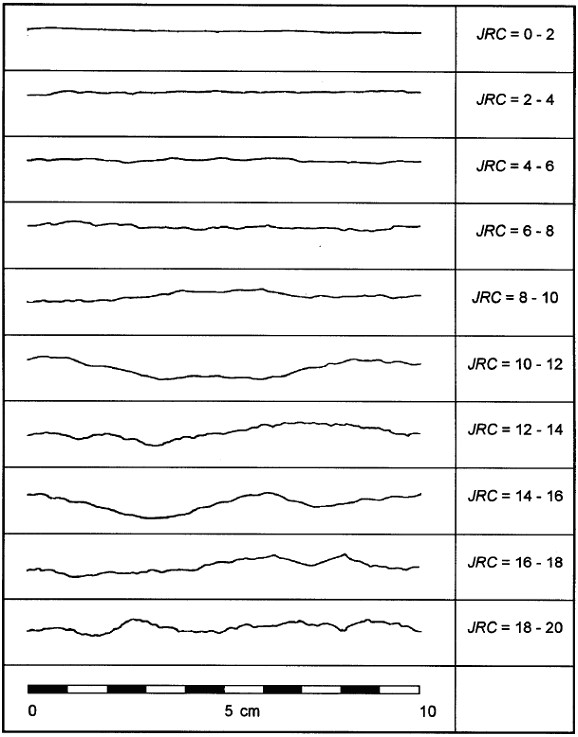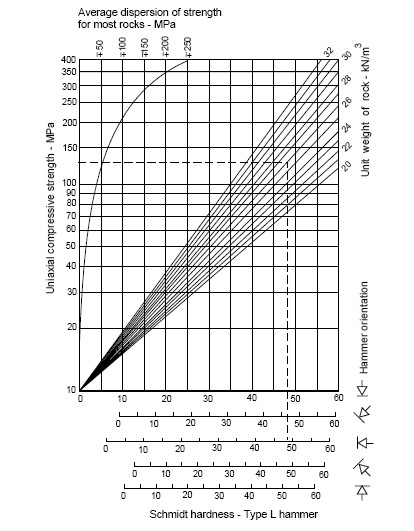Barton - Bandis Parameters
Joint roughness coefficient JRC
If the value of JRC cannot be determined by direct measurements on the joint surface, it is possible to obtain this value from the Barton graph (see figure) showing the variation of the coefficient JRC as a function of the length of profile and roughness depth.

 Diagram to determine JRC (after Barton)
Diagram to determine JRC (after Barton)
Rock joint roughness profiles showing the typical range of JRC are plotted next.
 Rock joint roughness profiles showing the typical range of JRC (Barton & Chubey 1977)
Rock joint roughness profiles showing the typical range of JRC (Barton & Chubey 1977)
Compressive strength of discontinuity JCS
Methods allowing us to determine the compressive strength of discontinuity (slip surface) JCS are generally recommended by ISRM. The value of JCS can be obtained from the Deere-Miller graph showing its dependence on the rock strength found from the Schmidt hammer measurements, see figure below.

Basic angle of internal friction on slip surface φb
The basic value of the angle of internal friction on the surface is approximately equal to the residual value φr . Nevertheless, it can be generally measured in laboratories using shear measurement devices (typical area of the specimen is 50*50 mm). Typical ranges of the basic angle of internal friction for weathered rock surfaces are 25° to 35°.